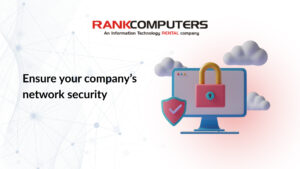Beneath the surface of seamless digital experiences lies a complex web of IT infrastructure, powering everything from online transactions to data storage. However, what happens when this intricate digital network is suddenly disrupted? From data breaches to hardware failures, the threats to modern IT systems are as diverse as they are inevitable. Moreover, the digital world never sleeps, and surges in demand can happen in the blink of an eye, potentially overwhelming even the most robust systems.
When unexpected disruptions strike businesses, traditional disaster recovery methods, although effective, may often struggle to keep up with the rapid pace of today’s dynamic business landscape. However, there’s an effective solution that offers agility and scalability in times of chaos: IT rentals.
In this blog, we’ll discuss the challenges of meeting high IT infrastructure demand with traditional disaster recovery plans and how to incorporate IT rentals into your disaster recovery strategy.
Challenges in Meeting Increased IT Infrastructure Demand
As organisations expand their digital presence, engage in e-commerce, adopt cloud-based services, and navigate remote work scenarios, the strain on IT infrastructure has become more pronounced. This surge in demand brings with it a set of challenges that traditional disaster recovery strategies often struggle to address.
Why Traditional Disaster Recovery Strategies Don’t Work
Conventional disaster recovery plans often focus on data backup, redundancy, and failover mechanisms. While these strategies are vital for safeguarding against data loss and minimising downtime, they may fall short of addressing the challenges posed by increased demand. Here are some limitations of traditional approaches:
- Scalability Constraints: Traditional infrastructure setups may lack the elasticity required to rapidly scale up or down based on demand fluctuations. Scaling up often involves time-consuming procurement, configuration, and deployment processes, making it unsuitable for real-time demand spikes.
- Cost Implications: Overprovisioning IT infrastructure to meet peak demand can lead to excessive capital expenditures during normal operations. Conversely, underprovisioning can result in service disruptions during peak periods.
- Inflexibility: Traditional setups are often designed with fixed capacities, making it difficult to adapt to unforeseen changes in demand. This can hinder a business’s ability to seize opportunities or navigate market disruptions.
- Time-Consuming Recovery: When disaster strikes, the focus of traditional recovery plans is primarily on restoring data and systems. Meeting increased demand during the recovery phase can be challenging due to infrastructure limitations.
- Resource Allocation: During disaster recovery, IT teams are already stretched thin, leaving little capacity to address surges in user activity. This can impact the overall customer experience and brand reputation.
Leveraging IT Rentals in Disaster Recovery
In traditional disaster recovery strategies, businesses often rely on their existing on-premises infrastructure. However, this approach can prove limiting when confronted with sudden surges in demand or unforeseen disasters. IT rentals provide an alternative solution by offering flexible and scalable resources that can be quickly deployed to address such challenges.
How IT Rentals Can Aid During Disaster Recovery
- Access to Redundant Systems and Backup Equipment: Rental providers offer a wide range of technology equipment, including servers, desktop computers, laptops, iPads, and more. Having redundant systems and backup equipment readily available enables you to quickly resume operations without any delays or disruptions.
- Cost-effective solutions: Instead of investing substantial capital into purchasing additional hardware that might only be needed sporadically, renting IT resources allows you to pay only for what you use during the recovery phase. This cost-efficient approach preserves financial resources for other critical business needs.
- Rapid scalability: In the aftermath of a disaster or during periods of high demand, the ability to quickly scale up your IT infrastructure is vital. IT rentals offer a solution that enables you to swiftly add capacity and resources without the delays associated with procuring and configuring new equipment. This agility ensures that your operations can resume promptly, minimising downtime and mitigating potential losses.
- Testing and training: Disaster recovery plans are only effective if they have been thoroughly tested and the recovery team is well-prepared. IT rentals can serve as an ideal environment for conducting disaster recovery drills. This enables your team to practice recovery procedures in a real-world setting without disrupting your primary infrastructure. Moreover, training in the rental environment enhances your team’s familiarity with the resources they’ll use during recovery.
- Offloading non-critical operations: During disaster recovery, your primary focus is on restoring critical systems and services. By utilising IT rentals, you can offload non-critical operations to the rental environment, ensuring that your core functions are prioritized. This approach streamlines the recovery process and allows your team to concentrate on the most essential tasks.
Designing a Disaster Recovery Plan with IT Rentals
Incorporating IT rentals into your disaster recovery plan involves a strategic approach to ensure seamless integration and efficient execution. Here’s a step-by-step guide:
- Assessing resource needs: Identify critical IT systems and resources necessary for seamless business operations. Prioritize which resources should be available for immediate rental in case of a disaster.
- Rental provider selection: Choose a reliable IT rental partner with a proven track record. Consider factors such as equipment availability, service level agreements, and the breadth of equipment offerings.
- Resource pre-booking arrangement: Establish a pre-booking arrangement with your rental provider. This ensures that the required resources are reserved and ready for deployment in the event of a disaster.
- Integration with existing infrastructure: Ensure that the rented equipment can seamlessly integrate with your existing systems. Compatibility and interoperability are crucial for a smooth recovery process.
Conclusion
Given the wide range of potential disruptions to IT infrastructure, from natural disasters to cyber threats, every business needs to have a reliable disaster recovery plan. This necessitates a proactive approach that goes beyond traditional recovery strategies, especially considering the increasing demands placed on businesses to scale their operations during peak periods.
Leveraging IT rentals for disaster recovery and scalability empowers you to navigate uncertainties while maintaining the highest level of operational resilience. This approach not only saves costs but also positions you to be adaptive and efficient in your response to ever-changing technological demands.



